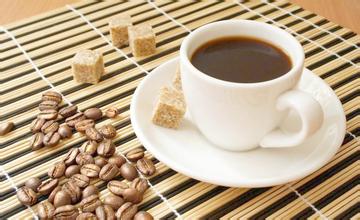Does roasting coffee beans produce smoke?-Starbucks concentrated roasted coffee beans
Does roasting coffee beans produce smoke?-Starbucks concentrated roasted coffee beans
Because the coffee is too active at this time, the fat will be rougher when making Espresso and will dissipate quickly. When using hand flushing or other utensils to extract, the flavor is bright but not mellow, and its sour taste is often too sharp, just like people in childhood, active, simple but emotionally unstable, and not calm enough, so you need to raise beans at this time.
I dare not judge which is right or wrong, but I personally prefer the latter, that is, freshly baked beans need to maintain proper contact with the air for a certain period of time.
The duration of bean cultivation depends more on the baking degree and extraction method. Coffee that is lightly roasted and extracted with utensils is generally raised for 1 to 3 days, while those that are deeply roasted and extracted with Italian coffee beans need to be raised for 3 to 5 days.
Young adults-- when drinking
Good coffee beans should be sealed and preserved as soon as possible. It is said that beauty is easy to grow old, and so are coffee beans. The peak stage of coffee bean flavor usually lasts only 2-3 weeks, no more than 1 month at most, so we can also think that the shelf life of coffee beans is 1 month. Of course, aging can be properly delayed by some man-made means, such as filling inert gas, but the laws of nature cannot be reversed by manpower after all.
The period of decline-- the late twilight of heroes
Which will be more attractive, a former beauty in her seventies and eighties or a cardamom girl in 2008? The flavor and aroma performance of a top coffee in recession may not be as good as that of ordinary coffee in its prime. Therefore, in the selection and purchase of coffee beans, not only depends on the brand and variety, the production date is a very important parameter.
How to judge the period of coffee may need to write a few more articles to make it clear, but in any case, we should remember that the freshness of coffee beans is very important. When drinking coffee, we should not only recognize the brand. And this is exactly what Starbucks in China has been criticized by industry insiders.

Important Notice :
前街咖啡 FrontStreet Coffee has moved to new addredd:
FrontStreet Coffee Address: 315,Donghua East Road,GuangZhou
Tel:020 38364473
- Prev

What's the difference between light baking and moderate roasting of coffee beans-- A powerful diagram of roasting coffee beans
What's the difference between light roasting and moderate roasting of coffee beans-very powerful roasting diagram 1, very shallow roasting (LIGHTRoast): baking degree; very shallow roasting, also known as shallow roasting. The lightest roasting degree of all roasting stages, the surface of the coffee beans is a light cinnamon color, its taste and aroma are insufficient, this state is almost undrinkable. Generally used in testing, rarely used
- Next

Description of Flavor of Cappuccino Coffee Variety introduction of Grinding Calibration method
Cappuccino Coffee Flavor description Grinding scale method Variety introduction this may be troublesome, if it is made at home, just mix the coffee and milk.) there is a simple way: first add a tablespoon of honey to the light cream 200ml, then beat it with an egg beater to make the coffee thick, add the partner, sugar (add according to your taste)
Related
- Beginners will see the "Coffee pull flower" guide!
- What is the difference between ice blog purified milk and ordinary milk coffee?
- Why is the Philippines the largest producer of crops in Liberia?
- For coffee extraction, should the fine powder be retained?
- How does extracted espresso fill pressed powder? How much strength does it take to press the powder?
- How to make jasmine cold extract coffee? Is the jasmine + latte good?
- Will this little toy really make the coffee taste better? How does Lily Drip affect coffee extraction?
- Will the action of slapping the filter cup also affect coffee extraction?
- What's the difference between powder-to-water ratio and powder-to-liquid ratio?
- What is the Ethiopian local species? What does it have to do with Heirloom native species?

